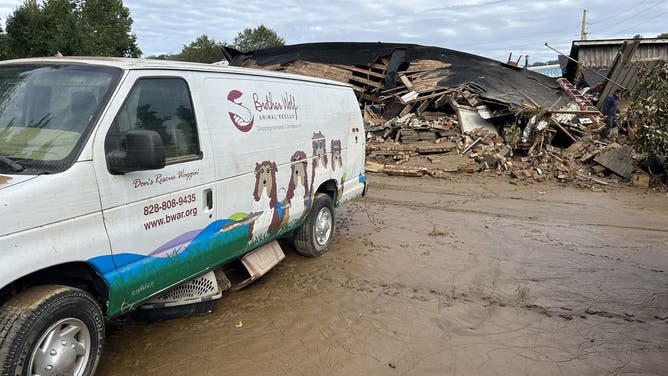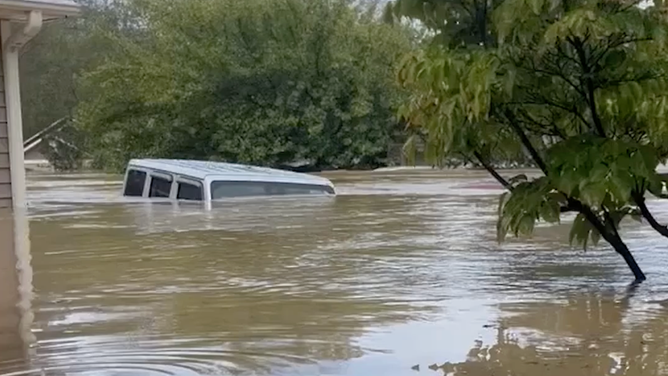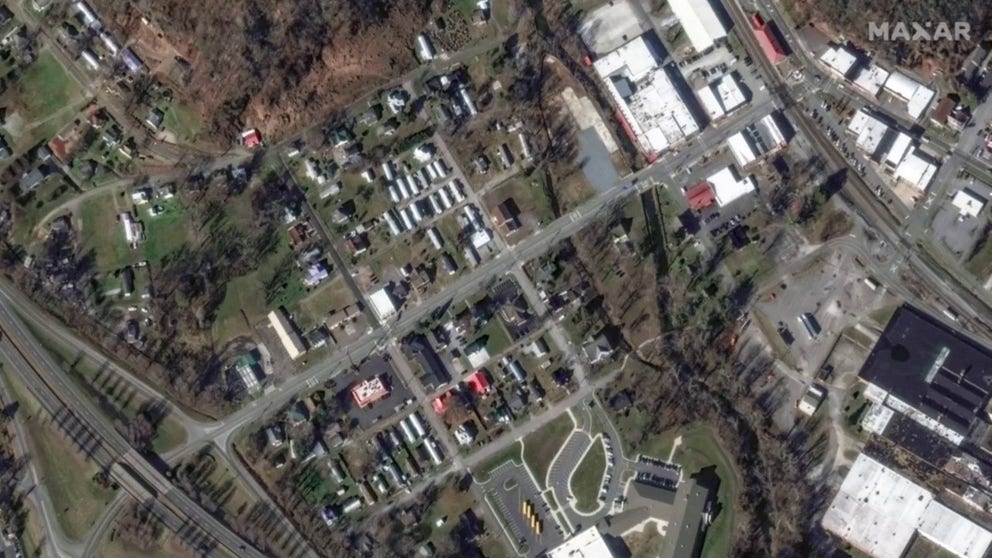North Carolina family 'thankful to be alive' after being rescued off roof during Helene floods
"We were able to be rescued by some good Samaritans that lived behind us that had some kayaks," said Swannanoa resident John Zara. "And after they were able to save my two kids, my wife, and some neighbors.
Man recalls being saved from roof during Helene flooding in Swannanoa
John Zara said he and his family are busy cleaning out their Swannanoa, North Carolina, home after they were saved from the roof of that home during Helene's horrific flooding.
SWANNANOA, N.C. – A family in hard-hit western North Carolina says they are "thankful to be alive" after Helene caused record flooding in the Tar Heel State, with many survivors wondering what’s next.
John Zara said he and his family are busy cleaning out their home from mud and other debris about a week after the event.
"So, we had already kind of been at a saturation point for rain from the previous storm before that was on Wednesday and Thursday. And then there’s those two systems kind of linked up. And I believe there was a dam that was opened or something of that nature," Zara said. "And I’d say within an hour or so, the water went from street level to inside my house and up to my chest."
The combination of a frontal boundary and the remnants of Hurricane Helene produced upwards of 3 feet of rainfall, with many observation sites reporting between 1-2 of rainfall during a five-day stretch.
The rainfall caused both the Swannanoa and the French Broad River to peak at record levels, beating heights last set in 1916, with valleys and low-lying areas the hardest hit.
HELENE’S DEADLY TOLL MOUNTS AS SEARCH FOR VICTIMS ACROSS SOUTHEAST ENTERS ITS SECOND WEEK
Zara said that when the water began to rise, his family climbed to the roof of their home to avoid being trapped in a vulnerable location, where they might not have been easily spotted.
"We were able to be rescued by some good Samaritans that lived behind us that had some kayaks," Zara said. "And after they were able to save my two kids, my wife, and some neighbors. (Then) folks were kind of starting to hear some noise over there (across the street). And we realized that they were trapped in the attic and an additional home behind there… was also (people) in their attic."
The State of North Carolina said hundreds of water rescues were performed by first responders, but the official count may never be known due to neighbors helping neighbors in the hours and days following the storm.
"We’re okay. You know, we’re thankful to be alive," said Zara. "And now without flood insurance and like most folks on our street, we are kind of left with tearing it out ourselves and do what we got to do to kind of start a rebuilding process."
Man helps rescue several people stranded on rooftops as Helene's floodwaters raged
John Arndt grabbed kayaks and helped pluck people from rooftops and help break through rooftops with an axe to free people trapped in their attics.
"I'm just glad everyone's safe. And I feel bad for everyone that lost everything," Jon Arndt, one of the rescuers, said. "The whole neighborhood was there when we would bring people to shore. The whole neighborhood was there throwing ropes. Everybody was trying to help."
Many victims lack flood insurance
HELENE DISASTER EXCEEDS DEVASTATION CAUSED BY THE ‘GREAT FLOOD OF 1916’ IN NORTH CAROLINA
The Zara family is not alone in now facing an extensive rebuilding process without insurance.
According to FEMA data, most of the state’s 10 million residents lack flood insurance, particularly in inland areas where large-scale disasters are seen as rare occurrences.
Residents without insurance can apply for federal assistance, but the aid usually does not go far enough to cover the entire rebuilding process and is designed to help with emergency supplies, temporary housing and other essential needs.
Preliminary damage projections from Moody’s Analytics suggest that the total impact could reach as high as $34 billion.
The estimate would place Helene among the top 10 costliest cyclones to ever affect the Lower 48, but falls well short of disasters such as Katrina, Harvey and Ian.
"I would have never thought it was possible. I think it's horrible...but it's biblical for sure," said Arndt.
Satellite imagery before and after Hurricane Helene
Satellite images from Maxar Technologies show the extent of flooding in Old Fort and Spruce Pine in western North Carolina.








